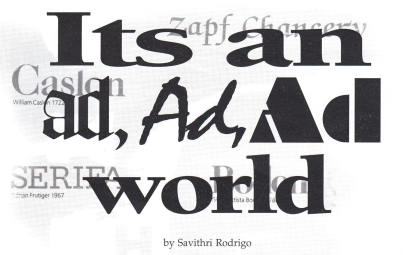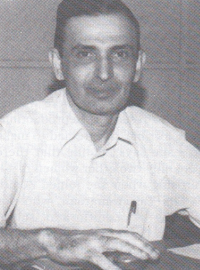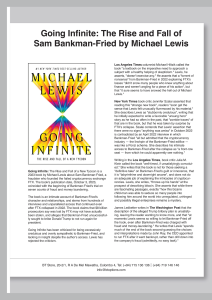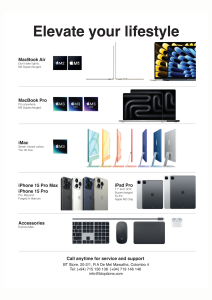
What is advertising? One of the best definitions of advertising has been, “the ability to sell a freezer to an eskimo”. But what Really does advertising entail? Well, it could be called part of communication that is most visible to the consumer and the world large, because right throughout the day, a person is bombarded with advertising messages.
Right from the days of the King’s Town Crier, advertising has been in existence in Sri Lanka. But it is only about five decades ago with the emergence of commercial radio and advertising agencies like Metropolitan Advertising, Zenith, Grants, J Walter Thompson and International Advertising Services that advertising in Sri Lanka really began to rear its head with great gusto.
The very first advertising agency on record would most probably be H G Jayasinghe and Company, owned by Hubert and Gerry Sr. Then came the foreign based J Walter Thompson run by Mr. Campbell and in 1955 International Advertising Services, pioneered by Tim Horshington of Radio Ceylon Frame, Zenith with Saul Fernando Metropolitan Agencies and Grants in 1958.
The founder of Grants in Sri Lanka, Reggie Candappa believes that his experience at Lake House newspapers gave him the chance of a lifetime. When Grants USA wanted to open a branch in Sri Lanka, Lake House offered him the opportunity and from then on with just USS 1,000 per month as expenses for the running of the entire agency, he began his sojourn as the first international ad agency to be owned by a Sri Lankan. Candappa is considered the guru to most advertising people in the country today. Most of them got their grounding at Grants and have subsequently begun their own agencies. The late Ananda Tissa de Alwis, Ranjith Jayasuriya, Melville Assauw and Lilamani Dias Benson are some of them.
“I grew up with advertising. As a toddler, I remember this office at home and even sitting on the receptionist’s lap”, reminisces Candappa’s daughter, Neela Marikkar, now the head of Grant, Mckann, Erickson. A good artist, Neela joined Grants as an Art Director and now has over 135 people working for her, with many Bell awards and Ola awards under her belt.
Another “Great” in the advertising industry, is the young and dynamic Ranil de Silva who is the Managing Director of JWT Sri Lanka and International Vice President, the first Sri Lankan to be recognised in the international advertising arena. “JWT began in 1864 but came to Sri Lanka in 1951 because Ponds was to be marketed here and there was no agency here to handle the kind of “advertising that they wanted”, says Ranil.

At the time that he joined JWT, 15 years ago, he believes that advertising was done in a very small way. “Professionalism was just emerging and the approach was a bit unstructured. Agencies were just suppliers of advertising services. We gave what the client wanted and that was that.”
Felicia Dean who has functioned as Managing Director of Zenith Advertising for 26 years believes that operations are much easier now. “Earlier there was no data. No research. Reproductions were terrible, but we had to make do”, she says, adding that there were only two other women in advertising when she joined Zenith -Mrs. Vairawanathan, who was working at Zenith and subsequently began Thunderflash Advertising and another lady who began Vision Advertising. “Our clients were all men and it was difficult to convince them that we could do a good job. They were not sure if we would deliver the goods, but over the years we built up their confidence and now, I would imagine that the industry has a ratio of 50:50 males and females.”
Sri Lanka now boasts of nearly 100 accredited advertising agencies and about 500 small timers. The trend has gradually become different down the line. Fundamental changes have taken place. Clients make the agency a part of their strategy, consulting them on anything and everything that concerns the product, sometimes even at formulation stages. Professionalism is at a new high and the agency is considered a partner in communication.
Advertising in three languages may seem difficult to some. Sometimes, there are puns used in English that cannot be directly translated into Sinhala and a totally urban idea some times cannot be portrayed in a rural setting. According to Ranil, the start of an advertisement is the idea and if it is a strong idea, it must travel. Direct translation cannot be done. The approach must be defined and if the whole campaign is in Sinhala, then the concentration of the campaign must be in Sinhala. Says Ranil, “We were once handling a campaign for John Keells and the recipe we were going to publicise was devilled meat balls. When I got the Sinhala copy, my eyes nearly popped out of their sockets because staring at me in the face was the direct translation, ‘Yakage Mas Bola’,”
“Working in India, I got used to advertising in 14 languages”, says Pradipta Roy, Director, Advantage Sri Lanka which has offices in Singapore, Malaysia and Indonesia. “The look of the ad is the only thing that matters. It can be very international and high quality and the only difference is the style of the text matter.” Beginning his career in advertising at JWT Bombay 12 years ago, Roy has been in Sri Lanka from the inception of Advantage in 1994. “A good ad must disturb the equilibrium in the consumer’s mind. Development of the mind is very important. When I first came here I was shocked to see the quality of some advertising here. This is because most clients and agencies treat consumers like morons”, said Roy explaining that the advertisements had little creativity, and was almost like plan notices. “If you see an advertisement that irritates you because it treats you with little respect, would you buy the products”, he asks. “But I’ve seen a rapid change concepts have changed, lines have changed and when one agency is brave enough to change, clients want an ad just like that one.”
Press
With the birth of Lake House Newspapers and the exposure to Brit ish newspapers, local press advertising began in earnest. The earliest recollections in press advertising were given by Reggie Candappa, Chairman of Grant, McKann, Erickson.
Newspapers had their own block making, art, printing and photo departments. All layouts, artworks, drawings and photography were done inhouse. Clients would bring in their product briefs and after a discussion, the layout/visual would be done. Products were photographed by Bertie Gunawardene, and Tazzie Vittachchi or Jan Modder would write the copy. The ultimate advertisement was very simple and hardsell the product, benefits, where you could buy it and the address.
With modern technology, typesetting nowadays could be got literally over the counter. But typesetting in those days, took as much as 2-3 days. Once the copy was written, the letters were put together in the shape of a block and tied with a string. No different lettering types could be used because it was not available. An ink roller is then run over the letters. Then a paper is put on top of it, the lid is closed and it is pushed in. The ink is wet when it is taken out and most often the printed letters are all broken. Once it is brought back to the Art department, the broken types are filled up with a fine brush. The artwork is then pasted down with the flour and water paste, which is commonly called ‘pappa’.
“I discovered rubber gum on my visit to the Grant offices in the USA”, says Candappa. “I was so thrilled with it, that when I came back, I brought two whole cans of it. Nowadays, rubber gum is obsolete. Everyone uses modern gums like 3M aerosol paste.”
Colour advertising came into vogue later, and the most popular col ours were red and green. Page layouts were done very carefully. No competitors’ products were on the same page or facing pages and the editor would look at the complete master before it went into print, to make sure that the articles and advertisements on each page matched each other. “If there was a plane crash, no airline would advertise for the next week and clients would be free to cancel an advertisement if this happened”, explains Candappa, expanding on the flexible workings of the newspaper industry. “Now, nobody even bothers about page layouts. Most often, column spaces are marked off at random. Recently an advertisement for Poppy Day, which was a just a red poppy in full white space was put together with another advertisement where the background was totally red. The entire effect of the Poppy advertisement went down the drain.”
Press advertising has taken a great leap forward with the introduction of colour. There is much more thought given to graphics and layout. Copy is exciting, readable and convincing. Sri Lankan advertising can compare quite favourably in the international press. However, the drawbacks exist. “One area that has been neglected is the advertising in the Sinhala and Tamil press”, says Godwin Perera, Group Marketing consultant of the Aitken Spence Group and a senior lecturer at the Sri Lanka Institute of Marketing. You find that exaggerated claims are made in these newspapers especially in the area of ayurvedic drugs. These claims are not made by big agencies but the small ones.”
Pradipta Roy who compares the colour reproduction with the region explains that there are limitations when working here. “Although the quality of colour separations have improved, it is still not up to the mark.”
Most agencies have their own controls and the bigger agencies will not make claims unless it is substantiated by medical reports or is tried and tested by them personally. Felicia Dean says “If I’m to advertise a skin cream that says it will remove blemishes in 24 hours, I will first try it myself”. Agencies, she says, must keep their good reputation and should not be branded by consumers as liars.
Radio
Radio Ceylon’s commercial service began in 1951 headed by Clifford Dodd, a veteran Australian broadcaster. All commercials went on live, and strictly adhered to the rules in the Commercial Book of Ethics called “The Green Book” and advertising was done directly through the commercial service or Radio Advertising Services Bombay, the local representatives for Radio Ceylon in India or Overseas Rediffusion who were the UK agents. Subsequently, HG Jayasinghe and company, JWT and International Advertising Services began bringing in commercials, being paid a 15% agency commission.
The copy was written by Edward Blacker and even when copy was given by the advertisers, it was rehashed before being aired by Blacker, Tim Horshington and Dodd. English took the pride of place and later, a Sinhala service began for 4 hours of the day playing mainly Hindi film music, but with advertising in Sinhala. One Sinhala voice which was very popular in those days was that of the late Dr Thevis Guruge.
Jimmy Barucha, Mill Sansoni and Bob Harvey were some of the ‘selling voices’ available on Radio , Ceylon those days and according to Jimmy Barucha, “we got a lot of flack from the press saying that we were debasing the culture etc. It was actually a revolution and the press faced a fair competition.”

The trend then was for a punchy, hard sell type of commercial. Sometimes people told me that we shout but you know, that is not shouting, that is selling. We have to know how to modulate to suit the product. A soft voice cannot sell a lottery, likewise, a punchy style will not suit jewellery”, says Jimmy who, after four and a half decades, is still considered one of the best male commercial voices.
The first live commercial was for the Shell Petrol Station at Flower Road. All commercials were separated by the gong on the Asia Beam called the TOMCO chimes which was sponsored by Tata Oil Mills company and the electric bell on the Ceylon Beam sponsored by Punchisingho Jewellers. There were also a fair number of commercials which were foreign -Cheeseborough Ponds, Chevrolet cars being two of them, advertising directly from the UK.

With the development in technology, commercials were recorded on acetate discs and voiced by hired announcers. Until that time, all voicing was done by permanent announcers and no extra payment was made to them.
Commercial programmes began getting popular and Edward Blacker had the additional task of scripting the commercials and programmes that were aired. Hayleys Mystery Melody Quiz and Polka party, sponsored by Ceylon & Foreign Trades together with programmes broadcast live like the Manhattan Cocktail hour from the Galle Face Hotel every Saturday evening sponsored by Manhattan Shirts were among the first of these.
Jingles began coming in from overseas. Some of them were for Marmite, Thermagene Medicated Rub and Dream Shampoo and the production of jingles began locally too. The first jingle was for Volkswagen cars by Ruben and Charmain Solomon and the first recorded commercial was for Maliban biscuits.
“There is a story on the thought for the first jingle”, reminisces Felicia Dean. “Hubert Jayasinghe strummed a guitar and sang a ditty under the office window of the General Manager of Lever’s for a Levers product and that is how the first jingle came to be.”
Reggie Candappa remembers his first jingle. “Jingles were in its infancy and we thought anyone could do it. So we wrote the words, composed a tune and our Media Director sang our first jingle for Plaza Canned Fish. It was so terrible that when I went for a party one day, there were all these people talking about this terrible commercial for Plaza canned fish. It told them that I had succeeded in my objective, in that they were talking about my product and had taken notice of it”, he says, amused.
Production houses were not prosperous in those days because Radio Ceylon would record all the commercials themselves, except for some jingles. The very first production house, Oggie’s, was situated at Frankfurt Place, but was set up more as a novelty and a hobby rather than a lucrative business.
Nowadays, there is a new type of jingle, “A Spingle” – this is a jingle with singing words and spoken words in between or the tag line spoken. This form of commercial has become very popular now.
Television
With the genesis of television in Sri Lanka, a new media hype began. Television was a completely new ball game in a hitherto advertising world dominated by press, radio and outdoor advertising. The very first television production Telecine incorporated in 1979, recruited a team of professionals in the field, technical and administrative, headed by D B Nihalsinghe and D B Suranimala.
“At that time, we were the pundits. We were sought after by everyone in the South East Asian Region because we had the most sophisticated equipment and people in the business,” says D B Suranimala, Managing Director. “We specialised in television commercials. Some of our earliest clients, Levers, Edna, Kandos and the state banks have been with us through thick and thin. I remember the first teledrama I did for Mahapola, ‘Sandamalige Kathawa’ (Sandamali’s story) to publicise the Mahapola scholarship scheme.”
Felicia Dean says that at the inception all TV commercials were shot and narrated over. She remembers a commercial for Metalix kettles taking days and days to get together. The very first spoken TV commercial was for Lakspray, where a mother comes and says, “Rohan, it is time for your Lakspray”. Felicia believes that at that time it was a major achievement. “The second such commercial was for BCC where two housewives meet and have a chat at a shop.”
Television is a very visual medium and markets and products must be studied thoroughly before a commercial is televised. The concepts must suit our culture, our people and their values.
“There are things people don’t like to see”, explains Suranimala. “Meat on television for a rural man is disgusting. Roast Chicken and western dishes only takes away his appetite. The only way this product can be sold to these people is as a side dish to our traditional rice.” A multi-award winner in television commercials both here and abroad, Telecine has also bagged the Diamond award given by the Onboard Services Magazine for the Airlanka commercial. On this, Suranimala says that producing commercials at random should not be done. Study the market and set the objectives and then conceptualise the commercial. “We play on people’s emotions, like the Kodak Father commercial and the Nespray Akuru Kiyawana (letter reading) commercial.”
The first TV commercial produced by Grants, conceptialised by Lilamani Dias Benson when she was at Grants, was for Nespray. “One incident I do remember in the shooting was when the little boy had kept a rubber scorpion near the glass of milk when the girl was going to take it. This was not in the script. The emotions on the faces of the children were totally spontaneous and we decided to include it in the commercial”, laughs Reggie Candappa, adding that Lilamani Benson, now the head of LDB Lintas is a very talented and hardworking lady.
“Looking at TV commercials, I think the ideas must be strong conceptually and be able to carry through, like the Kist Mama (Uncle) commercials and the Thultex commercial I did in 1981, which I still con- sider one of my best”, adds Ranil de Silva having won an international award for the Kraft General Foods TV Commercial. “15 years ago, winning an international award was only a piped dream. Now, it is a reality. We can see that our work is being recognised and that Sri Lanka can hold its own at any international advertising forum.”

Television production technology is at an all time high in Sri Lanka, but technology is changing at breakneck speed, and Sri Lanka will probably be struggling behind in a short space of time. Sri Lanka also lacks trained technical people even though the equipment is available. Computer graphics are in its infancy as there are no people resources. Very soon, tapes will be replaced by computer hard disks and all recordings will be done digitally due to satellites going digital. It will be a totally “tapeless” society.
Roy however feels that Sri Lanka has a very long way to go before producing quality, creative TV commercials. “Sri Lanka has excellent equipment but no exposure. Also quality can be high if the agency gives good ideas. The agency and the client are both at fault agencies should move away from the standard ways of depicting ideas. For example, family values are nearly always depicted by a 4-member family sitting down at a meal”, says Roy who explains that what is most important is how the human mind works. “Development of the mind is very important. The human mind is technology”, adding that agencies and clients must be exposed to international happenings, training and case studies.
Most agencies and production houses come across the problem of good models, making some of them scout around in India where the model base is gigantic. The models are either overused or once they have been used, clients do not want them again. Hence, it is impossible to build up a model base. “Those days, at model was considered as a loose moral creature”, says Ranil de Silva, “but now, the mood has changed. People like to model and we get more and more of them coming and asking us to give them a chance to model in a TV commercial.”
Godwin Perera was of the view that even though technical resources were not lacking, people resources needed brushing up, because the success of a TV commercial, especially, depended on the models. “They have to have a natural flair for acting and be uninhibited. Most of them are reluctant because of restrictions, constraints and inhibitions.”






